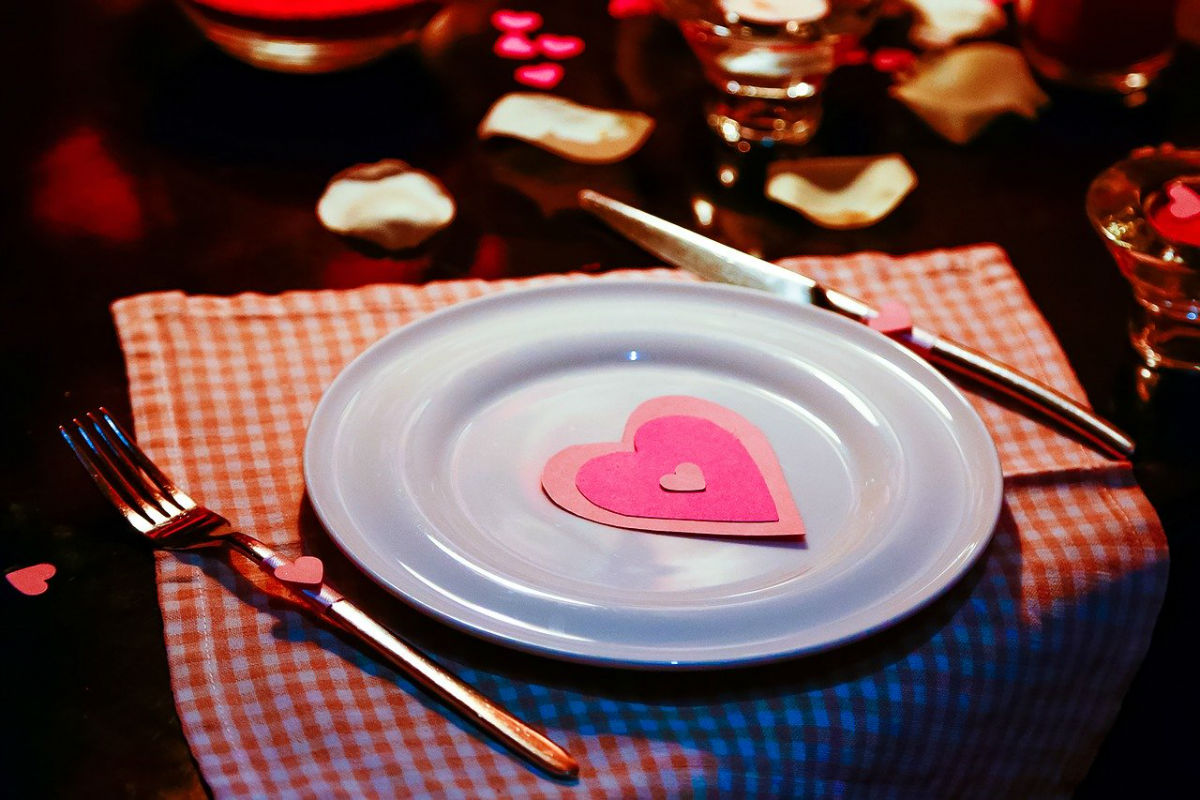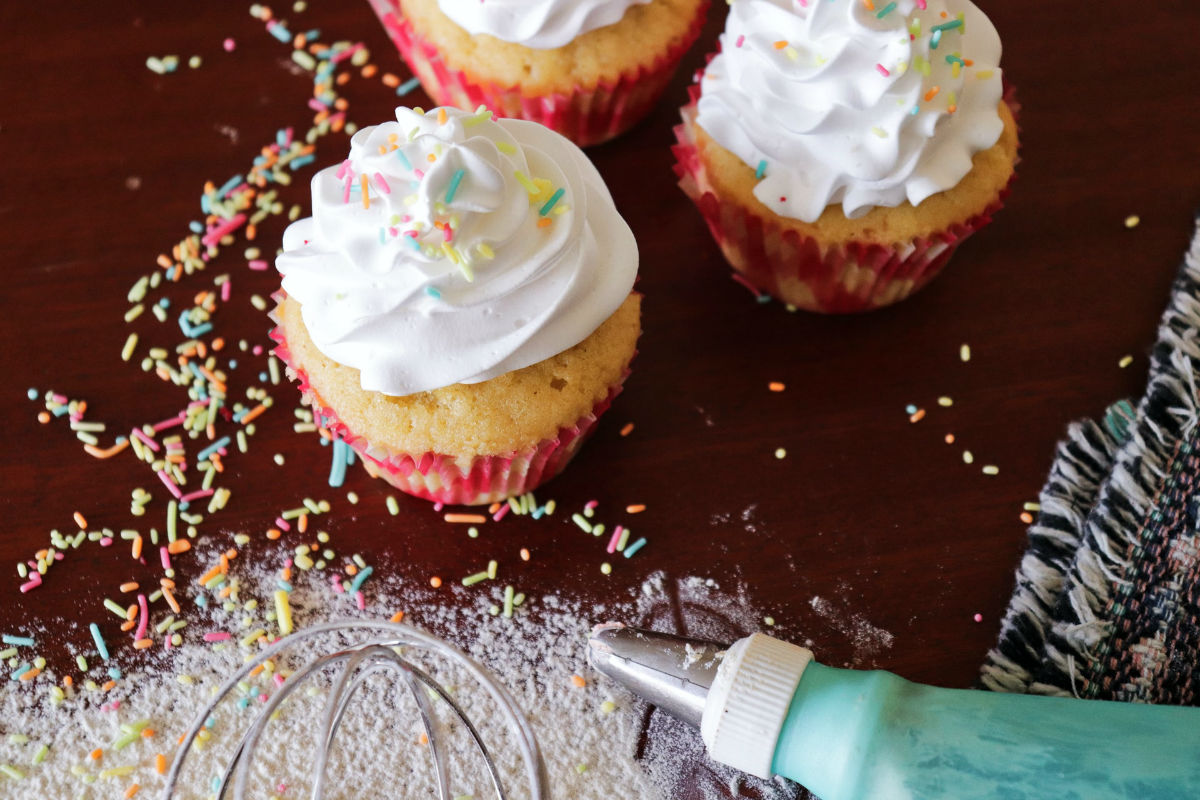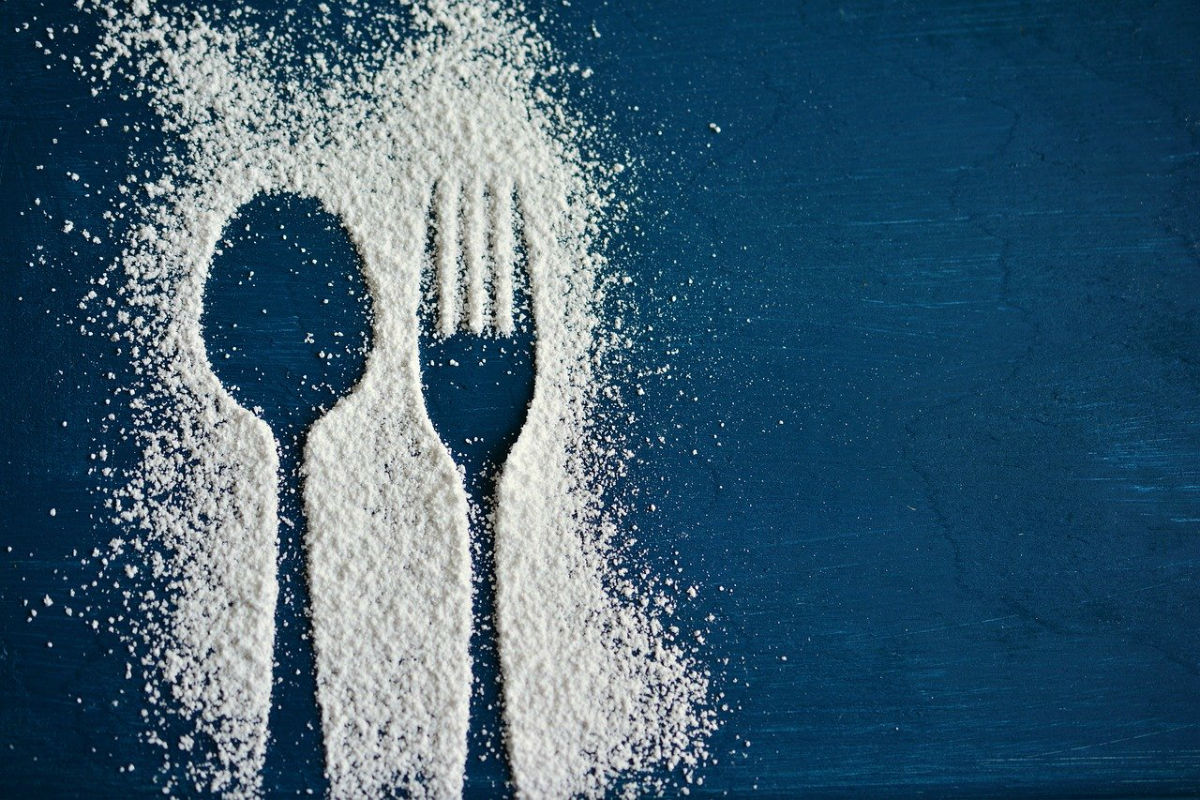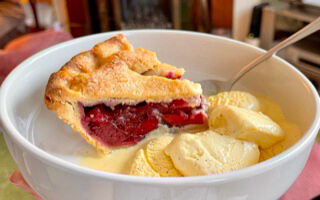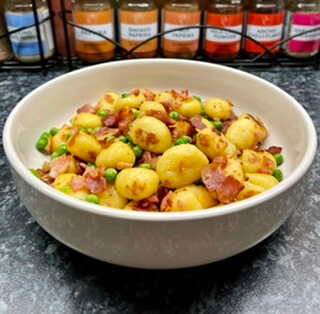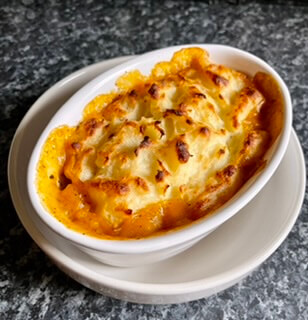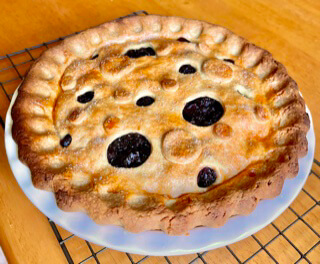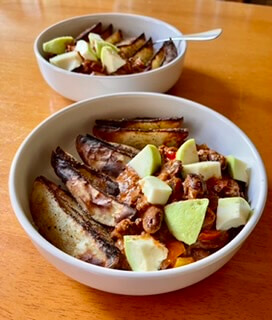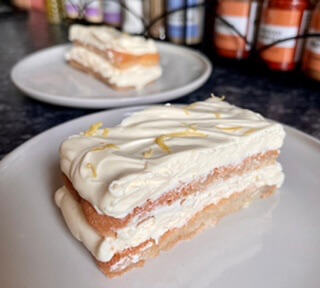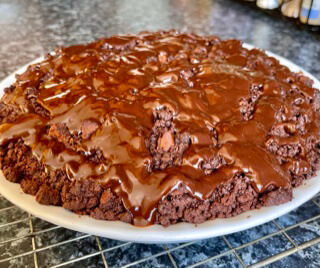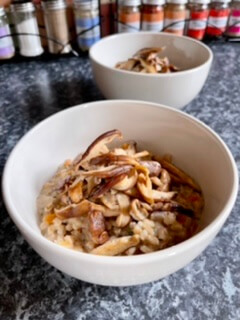Apple and Blackberry Pie
Serves: 12, Calories: 398
- Effort: High
- Kit: By Hand
- Lifespan: 3-5 days
- Temp: Room
- Cook's Fave: Yes
Bacon and Pea Gnocchi
Serves: 5, Calories: 497, Time: 45 mins
- Cuisine: Italian
- Effort: Low
- Quick: Less than 1 hour
Bangers and Mash
Serves: 6, Calories: 623, Time: 1 hr 45 mins
- Cuisine: British
- Effort: Medium
- Treat: More than 600 calories
- Cook's Fave: Yes
Creamy Taco Mince with Baked Potatoes
Serves: 6, Calories: 597, Time: 1 hr 45 mins
- Cuisine: Mexican
- Effort: Medium
- Spice Level: Mild
- Cook's Fave: Yes
Mississippi Mud Pie
Serves: 12-16, Calories: 529
- Effort: High
- Kit: By Hand
- Lifespan: 3-5 days
- Temp: Fridge
- Cook's Fave: Yes
Pearl Barley Risotto
Serves: 5, Calories: 373, Time: 1 hr 30 mins
- Cuisine: Miscellaneous
- Effort: Low
- Healthy: Less than 450 calories
- Vegetarian: Yes
Quick Tips
- Where cookies are concerned; Raising agent can have a drastic effect on the outcome: Baking Powder puffs, Baking Soda (bicarb) spreads. (Powder Puffs, Soda Spreads.)
- When mixing cake batter; Add 2 tablespoons of flour with last egg to help reduce the chance of curdling.
- A small amount of salt, vanilla or coffee powder will enhance chocolate flavour in baking. As does mixing cocoa with boiling water.
- Butter is roughly 80% oil and 20% water, amongst other things. Butter can be substituted for oil in many bakes in a 4:3 ratio. E.g. 100g butter equates to 75g veg oil.
- Dutch (alkali) processed cocoa gives a more dense texture in cakes than raw cocoa. Use raw cocoa in cakes for a better rise, and Dutch cocoa in buttercream, biscuits and brownies.
- Cakes baked with oil stay soft when chilled. Cakes made with butter harden in the fridge - bring them up to room temperature again before cutting or eating.
- Heat deactivates the enzymes in cream (pasteurises), so chocolate ganache can be kept at cool room temperature for upto 5 days, without turning sour.
- Massage kale leaves in a little oil before cooking; It helps break down the fibres that give it that coarse texture, making it softer to eat.
- To make cake flour; Mix 4 parts plain flour with 1 part cornflour. E.g. 100g plain to 25g cornflour. It gives cakes a finer, softer texture.
- For homemade self-raising flour; Mix 100g plain flour with 1 tsp baking powder. Sift together and mix thoroughly for an even rise.
- Adding sour cream to cakes extends shelf life by 2-3 days. The extra fat content helps keep cakes moist.
- Dark tins hold heat and can potentially burn cakes. Try using lighter coloured tins or Pyrex, which buffers heat.
- High-sided cake tins, or raised parchment linings, promote rise in bakes. Circulating air moves over the top and draws the cake upwards, similar to how a chimney works.
- A lightly beaten egg white, brushed over the inside of a pastry base, creates a seal so that pie/tart juices do not seep through and leave a soggy bottom.
- Psychology - The colour blue is an appetite suppressant so you feel less hungry when eating from a blue plate.
- Eating from a smaller plate plays with visual proportions so that it looks like there’s more food than there really is; You eat a full plate but a smaller portion, and still feel full.
- Sunlight deteriorates the taste of wine, so when buying, pick a bottle from the back of the shelf for a truer flavour.
- If you have a smelly food container that no amount of suds with freshen, leave it open, facing the sun for a few days. The sunlight will bleach out the aroma.
- Lactose is the sugar in milk. When you dilute cream as a substitute for milk, you also dilute the sugar, which weakens the flavour. Add some sugar to make the flavour more ‘milky’ again.
- Need to add cream while cooking? Full fat creme fraîche has the lowest fat content at 31%, that can be cooked without curdling.
- Velveting lean meat (coating in a mixture of cornflour and egg white) seals in the juices so that it stays soft and moist when it is seared.
- Extend the life of fresh root veg for upto 3 weeks, by submerging in a container of water, and keeping in the fridge. Change the water every other day.
- Plum tomatoes are a higher grade than chopped tomatoes but often the same price. Consider buying plum tomatoes and mashing them for a higher quality flavour.
- Dry herbs infuse flavour at the start of and during cooking. Fresh herbs add a burst of flavour towards the end of cooking, and at the table.
- Pat raw steaks dry as much as possible with kitchen towel, for a more intense sear. The pan must also be really hot. No more grey steak - just a lovely brown crust!
- When making pastry, add a dash of Vodka along with water at the binding stage - the alcohol will evaporate in the heat of the oven for a flakier crust.
- Soak dry fruit in tea instead of alcohol for moist fruit cakes that are just as tasty but family friendly.
- Allow a pie to bubble through the vents in its lid for 10 mins to ensure the filling is thoroughly cooked.
- Sugar is hygroscopic (attracts and holds on to water) so is classed as a wet ingredient when baking.
- Add baking soda rather than sugar to tomato-based sauces if too acidic. It takes the bite out of the sharp flavour that tomatoes sometimes have.
- If your dish tastes too bland, add a touch of vinegar, lemon juice or wine to pep up the flavour. Don’t always reach for salt; Tastebuds like a balance of salty, sweet and sour.
- Bake pastry in Pyrex, or similar glass dishes, because it heats up more evenly than metal tins. Your pastry should brown more evenly in glass too.
